BOZEMAN — In the past, up to four medics would respond when the Hyalite Fire Department received an EMS call in its coverage area south of Bozeman. They’d assess the situation together, care for the patient, and help the family.
“We’ve washed people’s dishes when they had to go to the hospital, or watched their dogs,” said fire chief Jason Revisky.
Now they send just one person in to do an initial assessment on non-critical patients, said Revisky, who is also a duty officer with Gallatin County’s emergency management department. The fire department began implementing protocol changes around the region weeks before the first presumptive positive test for COVID-19 was confirmed in Gallatin County on March 13.
“It’s almost like a structure fire, where the building is fully engulfed in flames,” Revisky said. “Everybody can’t run in. It’s too dangerous.”
If one crew member gets sick and infects others, they can’t provide care. Crew members now measure each other’s temperature every 12 hours, checking for the fever that’s a common sign of the infection caused by the coronavirus, and do the same for all of their patients. They’ve also added face masks to the eye protection and gloves they typically wear as personal protective equipment, or PPE.
As of March 31, about 700 patients had been tested in Gallatin County, according to the Gallatin City-County Health Department, and none are hospitalized. The first health care worker in the area tested positive on March 27. No additional information has since been made available regarding infection of health care workers. As of March 31, there are 184 confirmed COVID-19 cases in Montana, and 69 in Gallatin County, which has more cases than any other county in the state.
Although the virus hit Montana later than most other states, an early scare at Bozeman Health Deaconess Hospital jump-started preparations, said Dr. Eric Lowe, an emergency room doctor, medical director for pre-hospital emergency services, and technical specialist for Bozeman Health’s COVID-19 response team.
A sick patient checked in to the hospital in early February, having recently returned from China, where the coronavirus first appeared. The patient was quarantined and tested negative, but the event provided the impetus for Bozeman Health, the hospital’s parent organization, to activate a formal response, launching an Incident Command on Feb. 10. That process and structure includes daily communication and collaboration with the health department, which had already created its own IC on Jan. 29 to coordinate with the county’s emergency management team, local fire departments, and other first responders.
“We went from zero to 60 in our preparations overnight,” Lowe said of the hospital’s process. “It got us moving so much earlier than we may have otherwise, and maybe than many other places got a chance to do.”
Even so, Lowe said, health care workers are anxious. “[We’ve all] seen images and stories from elsewhere, and that does cause some fear. But there is also an underlying feeling of, ‘this is what we trained for,’ and a willingness to stand up and be there for a community.”
Protocols for all medical entities in the area are changing quickly. Bozeman Health, which administers Deaconess Hospital and a number of other facilities in Bozeman, Belgrade, and Big Sky, is now sending all employees and medical staff twice-daily coronavirus status updates. Those include any new or updated protocols and the number of confirmed COVID-19-positive individuals in the county, said spokesperson Lauren Brendel, who explained that Bozeman Health uses CDC guidelines to implement changes as necessary.
Such changes are happening daily, if not hourly. In the past month, they have included limiting patient visitation, closing several hospital entrances, and instating symptom assessment for anyone entering the building.
In an email, Brendel said that employees with respiratory illness symptoms are asked to stay home, and all employees are self-monitoring twice daily. They are required to adhere to proper hand-washing protocols and wear situation-appropriate PPE, she wrote, adding that reusable masks are made available to every employee who wants one. “Every effort to ensure people are six feet apart is being made, including moving workstations.”
Non-urgent medical services including cardiac rehab, physical therapy, and cosmetic surgery have been suspended, and staff from those departments are either temporarily working from home, or training to work in new departments like the viral triage clinic at the hospital and three drive-up testing centers that opened March 23 in the parking lots of Deaconess Hospital, Bozeman Health Belgrade Clinic, Bozeman Health Outpatient Services on North 19th Avenue, and Bozeman Health Big Sky Medical Center.
The viral clinic evaluates and triages any individual with respiratory symptoms, and can see up to 400 patients a day, Brendel said. The clinic accepts walk-in patients, while drive-thru testing sites require an order from a health care provider. Bozeman Health is also working to establish viral triage clinics in Belgrade and Big Sky. For people experiencing COVID-19 symptoms like fever, dry cough, and fatigue, Bozeman Health is offering free virtual health visits. (To access this service, download the b2 VirtualCare app and use the promo code FLUBZN2020).
Bozeman Health currently has 86 beds at Deaconess Hospital, including eight in the intensive care unit, Brendel said. There is a “surge plan” to add 25 new beds at Deaconess Hospital, with the possibility of repurposing an additional six beds in the postpartum area.
As the Bozeman Daily Chronicle reported on March 26, the hospital is fast-tracking a 30,000-square foot, $75.5 million expansion, which was already slated for completion in 2020 and will bring bed capacity up to 162.
“We plan to bring on an additional 20 beds by early May and another 20 by early June — nearly doubling our bed capacity in the next few months,” Brendel wrote. Big Sky Medical Center will also double its inpatient bed capacity from four to eight. Local aerial wildland fire contractor Bridger Aerospace has reallocated some of its work crew to help expedite the construction project, and has also offered its aircraft for emergency medical transportation and supply transport.
Currently, Bozeman Health has 40 combination ventilators/anaesthesia machines, with one of those at Big Sky Medical Center. With funding from local donors, it has ordered another 10, which are set to arrive within three weeks, Brendel said, with seven slated for Bozeman and three for Big Sky. Brendel said that though there is a national shortage of test kits, Bozeman Health has been able to meet its specimen collecting needs so far. Bozeman Health follows CDC guidelines in deciding who to test, Brendel said. Specimens are sent to the state for testing.
Personal protective equipment may become an issue for health care providers here, as it is elsewhere in the country. According to reporting by CBS News, which acquired a recording of a Monday, March 30, phone call between President Donald Trump and several rural state governors, Gov. Steve Bullock told Trump that Montana has received only a fraction of the medical supplies it has requested from the national stockpile, and has had difficulty purchasing supplies from private sources as well.
“I could give four or five examples over the last week where we have supply orders, and they’ve subsequently been canceled, and they’re canceled in part because what our suppliers are saying is that federal resources are requesting it and trumping that,” Bullock told Trump.
Life Flight Network, Montana’s largest air ambulance provider, had transported 120 possible COVID-19 cases as of March 29 in its service area, which includes Montana, Idaho, Oregon, and Washington.
president Dominic Pomponio. “In order to provide for our hospital and EMS workforce, we have to have PPE, and at this time it is becoming scarce.”
The article was published at How Bozeman’s frontline health care workers are responding to COVID-19.

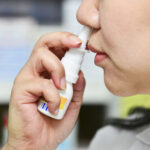
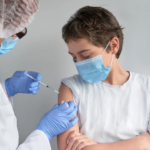

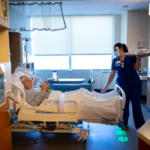

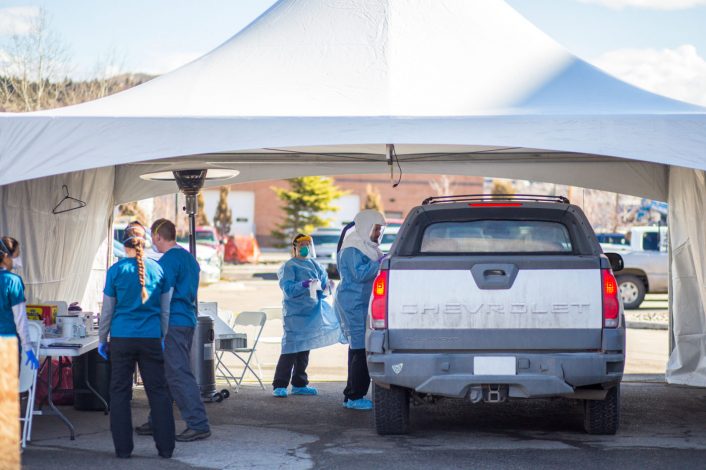
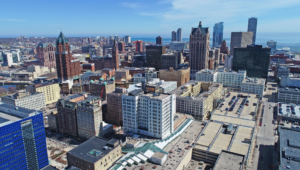



More Stories
Nasal COVID-19 vaccines help the body prepare for infection right where it starts – in your nose and throat
How important is the COVID-19 booster shot for 5-to-11-year-olds? 5 questions answered
Universal masking returns to Philadelphia schools Monday